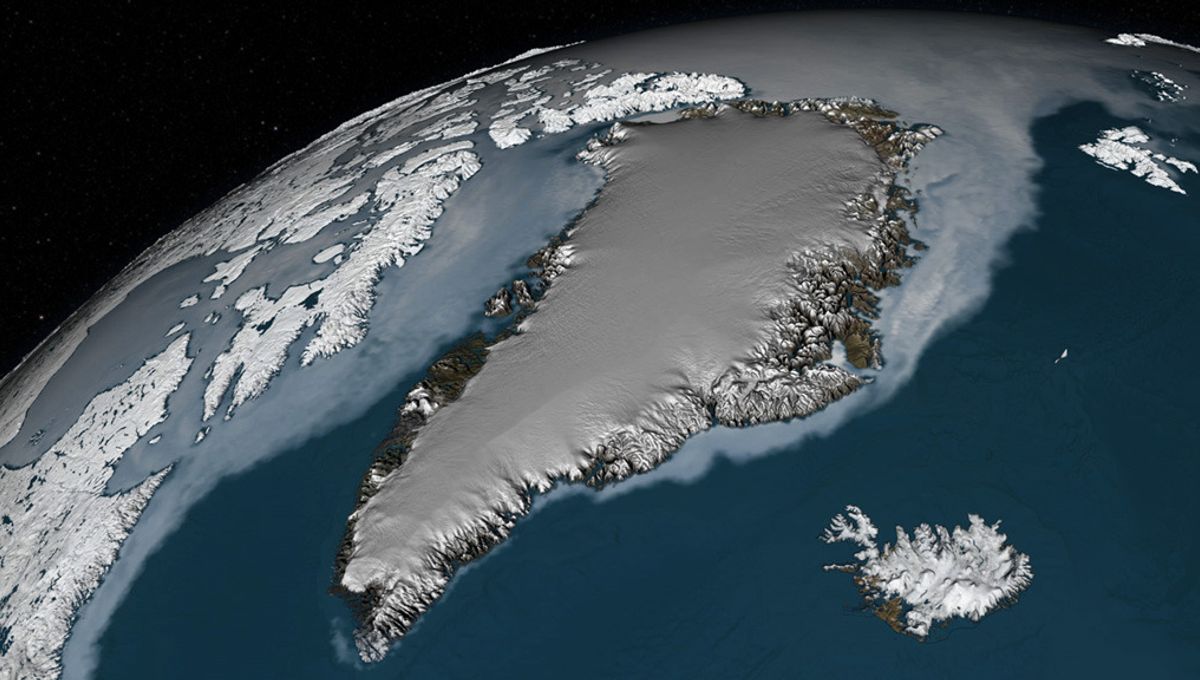
Earth’s ice sheets and glaciers are melting at such a rate it’s changing the way the Earth spins, causing it to wobble off its usual axis. The effect is so severe that the rotational pole might wander up to the length of a basketball court in the coming century.
Earth’s rotational pole is the point where Earth’s axis of rotation intersects with the surface. Because Earth “wobbles” slightly as it spins, this point actually moves over time in a process called polar motion.
The distribution of mass on our planet can also affect this teetering. Clearly, it takes a hell of a lot of mass to sway Earth in this way, but the melting of ice sheets and glaciers in Greenland and Antarctica is doing just that. Antarctica is melting at an average rate of about 150 billion tons per year, while Greenland is losing about 270 billion tons per year, according to NASA. As billions of tons of water redistribute across the globe, the balance shifts – and so does the rotational pole.
In a new study, two scientists from the Institute of Geodesy and Photogrammetry in Zurich used satellite data to look at changes in polar motion since 1900, then made forecasts of how it might alter by 2100 under optimistic and pessimistic climate projections.
They found that the rotational pole may drift by 27 meters (88 feet) by 2100, relative to its position in 1900. That’s under a pessimistic scenario in which greenhouse gas emissions are not slashed and ice sheets melt at an increasingly furious rate.
Under a more optimistic climate scenario, where greenhouse gas emissions are reduced significantly in the coming years, the rotational pole is still likely to move around 12 meters (39 feet) by 2100 from its position 125 years ago from today.
Bear in mind that the rotational pole differs from the geographic poles and the magnetic poles of planet Earth. The geographic pole is the fixed reference point for maps and navigation, representing the long-term average position of the rotational pole. Meanwhile, the magnetic pole is where your compass needle points based on where the planet’s magnetic field is strongest and points vertically downwards.
Although different, the magnetic pole is also on the move, albeit due to very different forces. Earth’s magnetic poles are the result of molten iron and nickel sloshing around its outer core. These liquid metals are conductive and in constant motion due to the planet’s rotation and heat-driven convection. In tune with the principles of electromagnetism, the movement creates electric currents, which generate a magnetic field.
Since the 1830s, the north magnetic pole of Earth has drifted some 2,250 kilometers (1,400 miles) across the upper stretches of the Northern Hemisphere from Canada towards Siberia. It’s not clear why this is occurring exactly – after all, it’s not possible to see beneath Earth’s crust – but it’s likely to do with shifts in the oceans of liquid metal that sit beneath our feet.
The study is published in the journal Geophysical Research Letters.
Source Link: Earth's Rotational Pole Could Drift 27 Meters Between The Years 1900 And 2100